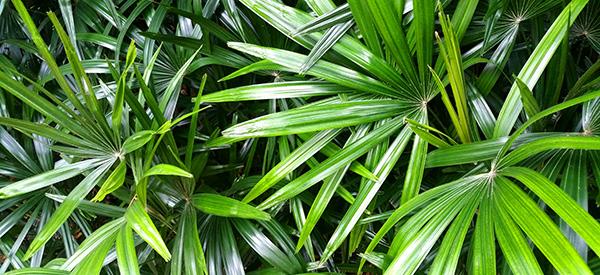
Saw Palmetto
Saw Palmetto (Serenoa repens) is a small palm tree with fan-shaped leaves and sharp-spined stalks. It is often used as an ornamental and landscaping plant due to its attractive textural accent. In the horticultural trade, the silvery-leaf varieties are the most sought-after. Saw palmetto is a descendant of the palm, but interestingly, it is the only species classified in the genus Serenoa. It differs from the common palm with its saw-toothed leaves, thus, the name Saw Palmetto. The fine spike is so sharp that it can break the skin or clothing upon contact.
id you know that in some states picking saw palmetto berries are considered a crime? In Florida, for example, county officials regulate the harvest of saw palmetto berries. The berries provide a major food for bears and other wildlife. It is a lucrative business for medicine, and illegal pickers may use it for usurious profit. Picking the berries needs a special permit if you plan to transport or sell them – even if you are picking them from your own land.
Since the 1700s, Native Americans were already using saw palmetto as a food source and a cure for urogenital problems. The locals noticed that livestock grazing on the plant appears fatter and healthier. So, early American settlers made juice out of saw palmetto berries and consume them to gain weight. In the 1920s, its popularity in the United States began to decline because of its bitter and acrid taste.
Where The Plant Is Found
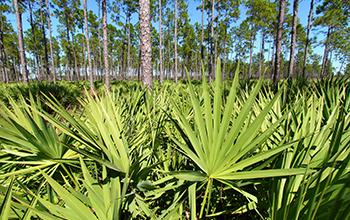 Serenoa repens is an indigenous plant in the coastal regions of the Southern United States. They are abundant in the Florida Everglades and other tropical regions, especially in southeastern America.
Serenoa repens is an indigenous plant in the coastal regions of the Southern United States. They are abundant in the Florida Everglades and other tropical regions, especially in southeastern America.
They often grow in clumps along the sandy coastal plains with their ability to tolerate salt.
Saw palmetto may also thrive as undergrowth in pine forests and savannas. They are quite hardy and grow in well-drained soil or seasonally waterlogged ones.
Related: The Complete Map of Edible Plants: Find Out What You Have in Your Area! (Video)
How To Identify Saw Palmetto
Saw palmetto grows close to the ground in a hardy shrub or sometimes a creeping stem. Its palmate or fan-like leaves make it an attractive focal interest in gardens and landscapes. Undisturbed, the saw palmetto plants can grow into a dense mass of foliage.
- Leaves. Rounded fan-like leaves with narrow segments of about 20 leaflets make up the saw palmetto. It is 2 to 3 feet long across with a green or bluish-green color for inland variety or silvery-white in coastal regions. A petiole or leaf stalk with fine, sharp teeth holds the leaves terminating in a rounded fan.

- Flower. Saw palmetto blossoms are gold, yellow, or white, and are only about 5 mm across in size. It grows in a loose branching cluster or panicles about 3 ft long. The saw palmetto flowers that bloom in spring are fragrant. It attracts pollinators for the production of honey.
- Roots. Saw palmetto has a large root system that can spread and overwhelm an area. These roots are not often clustered underneath the foliage but spread out 5 to 10 ft away from the base.
- Seeds. The flowers of the saw palmetto will flourish into a yellow berry the size of an olive. The fleshy berry will turn into a darker red as it matures. Inside the fruit is a single large brown seed with a wrinkly surface.
- Stem. Saw palmetto shrub can grow from 10 to 12 ft long that is much-branched and in a tangled mass. It grows close to the ground, sometimes underneath it or above, as an erect plant. It has a horizontal growth pattern. But occasionally, the stem may grow into a small tree. A longer trunk indicates older saw palmetto plants.
Related: Plant Identification Guide – 400 Wild Plants That You Can Forage For (Video)
Saw Palmetto has two known varieties: green and silver. Green S. repens is consumed as a medicinal herb. The S. repens forma glauca (silver variety) is the ornamental type grown in many gardens. It is also the easiest saw palmetto to propagate as compared to the green variety. Researchers are presently studying the feasibility of substituting silver saw palmetto with the medicinal green saw palmetto variety.
How To Grow Saw Palmetto
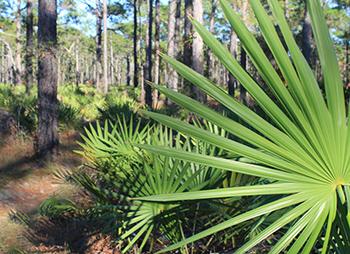 Growing saw palmetto from seeds is the most practical way of propagating it. You may propagate it through its underground rhizomes. But, it has an extensive trunk and root system, and digging its root is not an easy task.
Growing saw palmetto from seeds is the most practical way of propagating it. You may propagate it through its underground rhizomes. But, it has an extensive trunk and root system, and digging its root is not an easy task.
The downside of seed propagation though is the slow process and long years it will take to grow the plant.
If you do not want to wait long, you may find saw palmetto seedlings in your local nursery. This plant is a beautiful addition to a garden or used as a container plant. It is also an excellent ground cover that will help solve soil erosion problems. However, it is not a very fire-wise plant to consider if you happen to live in arid regions prone to bush fires.
Growing Saw Palmetto From Seeds
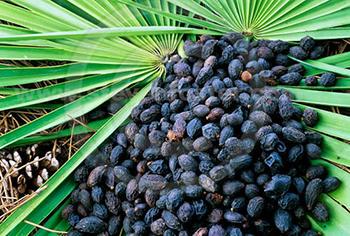 Saw palmetto seeds will take up to about a month to germinate. It will also need two to three more years to fully establish itself. The plant is hardy through zone 8 or regions with warm weather.
Saw palmetto seeds will take up to about a month to germinate. It will also need two to three more years to fully establish itself. The plant is hardy through zone 8 or regions with warm weather.
You can buy saw palmetto seeds from seed stores for planting. Or you can harvest the mature berries of an existing saw palmetto plant and collect its pit. Remove the outer covering or seed coat, clean, and soak them in water for about 24 hours.
Grow the seeds in a container with well-draining soil and water them regularly. Saw palmetto germinates slowly and may take up to a month for seedlings to emerge.
Transplanting Saw Palmetto
After about two to three years, the plant may have fully established itself and be ready for transplanting. To do this, dig a hole that is larger than its root bulb.
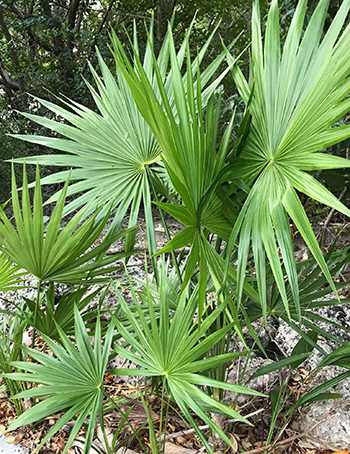
Saw palmetto can grow in all types of soil. But they will do well in sandy soils, even burnout ones.
Space the plants at least 36 to 60 inches apart. Water the plant regularly but refrain from waterlogging it to prevent stunted growth. Once established, you may water it only once a week.
The growing requirement for saw palmetto is simple:
- Well-draining soil
- Full sun to nearly full shade
- Regular watering only in the early stage
- Slightly alkaline to strongly acidic soil (4.5 to 7.5 pH level)
How To Harvest Saw Palmetto
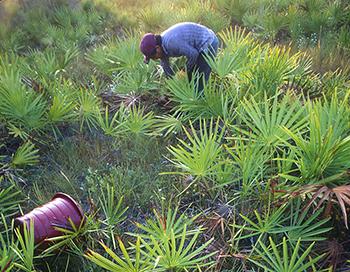 If you are growing saw palmetto for its berries, harvesting it is quite tricky and tedious. It is mostly because of its sharp-toothed edges that can even rip clothing apart. When working on a plantation, using thick gloves and clothing is necessary. And more than the garments, you will also need to secure your permit if you happen to live in Florida. You can get this from the Department of Plant Industry.
If you are growing saw palmetto for its berries, harvesting it is quite tricky and tedious. It is mostly because of its sharp-toothed edges that can even rip clothing apart. When working on a plantation, using thick gloves and clothing is necessary. And more than the garments, you will also need to secure your permit if you happen to live in Florida. You can get this from the Department of Plant Industry.
Saw palmetto berries are harvested once they are already black and shiny. It is around early fall until the beginning of winter. Harvesting is best done in the early morning, just before sunrise. Harvesting saw palmetto gets a little bit more challenging in the dry thickets. It is home to venomous rattlesnakes or alligators if near waters.
What Saw Palmetto Is Good For And Natural Remedies Made From It
The saw palmetto is valued for its berry and pit used in improving reproductive health in both men and women. Its flower is also considered a rich source of commercial-grade honey. Its medicinal action involves anti-inflammatory, diuretic, and aphrodisiac.
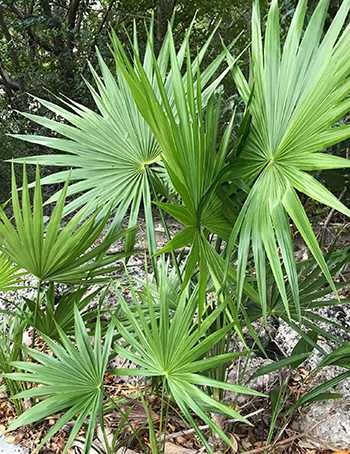
In men, the saw palmetto is an effective herbal treatment for Benign Prostate Enlargement (BPE). It works by shrinking the prostate to its normal size, eventually treating tumors and prostate cancer. It is also superb in treating impotence and in increasing libido.
High levels of testosterone cause the enlargement of the prostate. The hormone-balancing property of the saw palmetto regulates its production to manage enlargement. Its anti-inflammatory property promotes healing for the body. It is also loaded with fatty acids that can reduce the contraction of muscles, especially in the prostate.
Women with fertility problems also benefit from the saw palmetto plant. It helps regulate hormones and increases fertility. Saw palmetto can correct androgynous appearance in women and inhibit the overproduction of testosterone. It can enlarge the breast and reduce male hair patterns in females.
Generally, saw palmetto works as an effective herbal remedy for the following conditions:
- Urogenital and reproductive problems
- Hypothyroidism
- Respiratory disorders (cough, cold, asthma, bronchitis)
- Digestive problems
- Loss of appetite
- Andropause
- Alopecia or hair loss
What Parts Of The Saw Palmetto Is Used For Remedies?
The powdered form of saw palmetto roots makes an excellent tea for treatment. Historically, fresh berries are consumed but their bitter and unpleasant taste veers people away from it. Taking a decoction of dried berries is often preferred over eating raw ones.
Saw palmetto is marketed today in the form of capsules. This is the most common medicinal form. The pill is used for supplementary treatment of bladder function and hair loss. A liquid extract and tincture are also available which is consumed for urinary tract infections.
Herbal remedies and supplements are available in specialized health and herbal stores and some online resellers. Raw berries may be hard to find outside the southeastern United States because of its stiff regulation. But they may be sometimes available in selected farmer’s markets. Too often though, the berries reach the market as dried or powdered.
Saw Palmetto Tea
Ingredients:
- 5 to 2 tsp dried saw palmetto berries
- 1 tsp honey
- ¼ tsp vanilla or almond extract
- Sprinkle of cinnamon
- Boiling water
Steps:
- Place the dried saw palmetto berries in a tea strainer on a tea mug.

- Add boiling water into the berries, stir it well. Cover before letting it stand for 15 minutes.

- Add the honey, extract, and cinnamon. Stir.

- Remove the strainer from the cup and discard the berries. You can cool the saw palmetto tea or consume it while warm.

How To Use This Remedy:
You can use this healthy and powerful brew as a substitute for coffee. It is excellent in clearing the sinuses, colds, and cough. It may also cure an upset stomach and boost reproductive health. You may drink a cup of this brew three times a day.
Adding spices and honey will mask the bitter taste of the saw palmetto so you can enjoy the cup better.
Saw palmetto tea is safe for everyday use. But if you are using the capsule, tea, or tincture for treating a health condition, always follow the correct dosing. Adults may consume a daily dose of 320 to 960 mg of saw palmetto orally for three years.
Related: Add This “Unusual Nutrient” to Coffee or Tea, to Effortlessly and Fully Empty Your Bowels Every Single Morning (Learn More)
What Plants Resemble Saw Palmetto
| Feature | Saw Palmetto (Serenoa repens) | Fan Palms (Saribus rotundifolius) | Cabbage Palm (Sabal palmetto) |
|---|---|---|---|
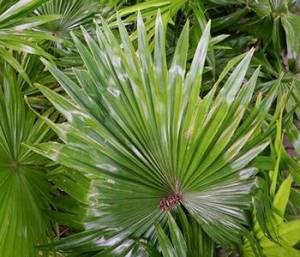 |  |  | |
| Size | 12 to 36 ft | 50 to 80 ft | Up to 65 ft |
| Leaves | Rounded fan-like green leaves with sharp saw-toothed petioles | Almost round palmate leaves | Fan-like palmate leaves |
| Flowers | Yellow or white; in densely clustered panicles 60 cm long | Long stalked panicles 1 to 1.2 m long; cream/ off white | Yellow or white; in a densely drooping cluster |
| Stem/Trunk | Much-branched; maybe erect or creeping trunk | Solitary and erect trunk | Rough, fibrous trunk; may be erect or arching |
| Scent | Nutty vanilla-like scent | Sweet scent | Sweet scent |
Warnings And Cautions
Saw palmetto can inhibit hormone production and may not be safe for pregnant and breastfeeding women. It can also reduce the effectiveness of contraceptive pills.
The saw palmetto can also slow down blood clotting. Do not combine it with other anticoagulant drugs or blood thinners. If you are about to undergo surgery, do not use saw palmetto two weeks before its schedule. People with hemophilia and ulcers should also avoid using saw palmetto.
In high doses, saw palmetto may cause loss of libido in both men and women. It is likely safe for most people but may cause side effects. If you exhibit symptoms like dizziness, rapid heartbeat, itchiness, acid reflux, or other unpleasant feelings, stop using the product.
Before taking any complementary medicine, always consult a qualified health professional. They will help you arrive at a well-informed decision for the best of your health. They should also be able to give the right dose for the specific health condition.
You may also like:
 50 Health Tips Every Person Over 50 Should Know
50 Health Tips Every Person Over 50 Should Know
Transform Your Favorite Tea Into an Absolute SUPER Fat-Burning TEA By Doing This (Video)
7 Natural Remedies for Menopause








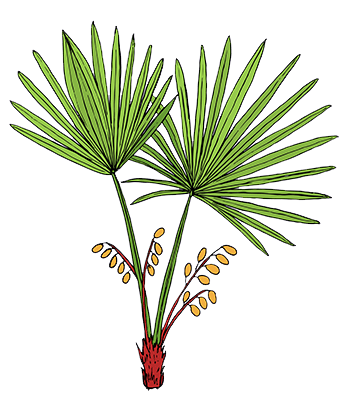
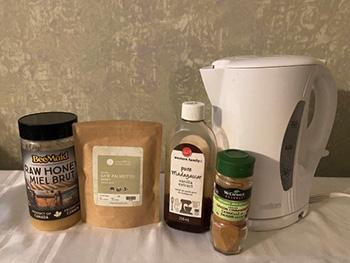
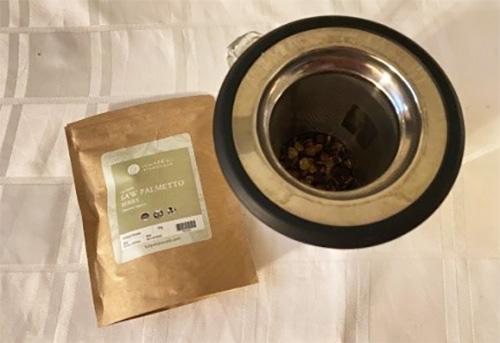

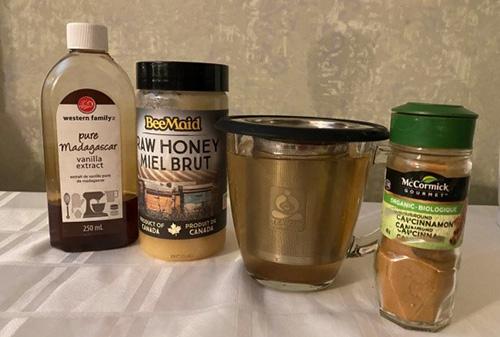
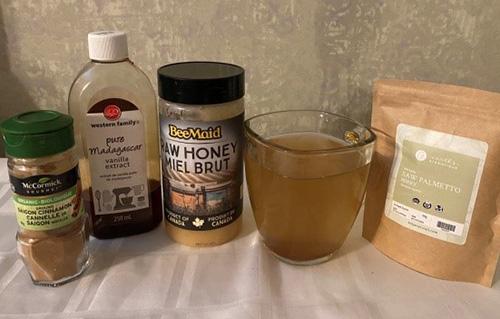
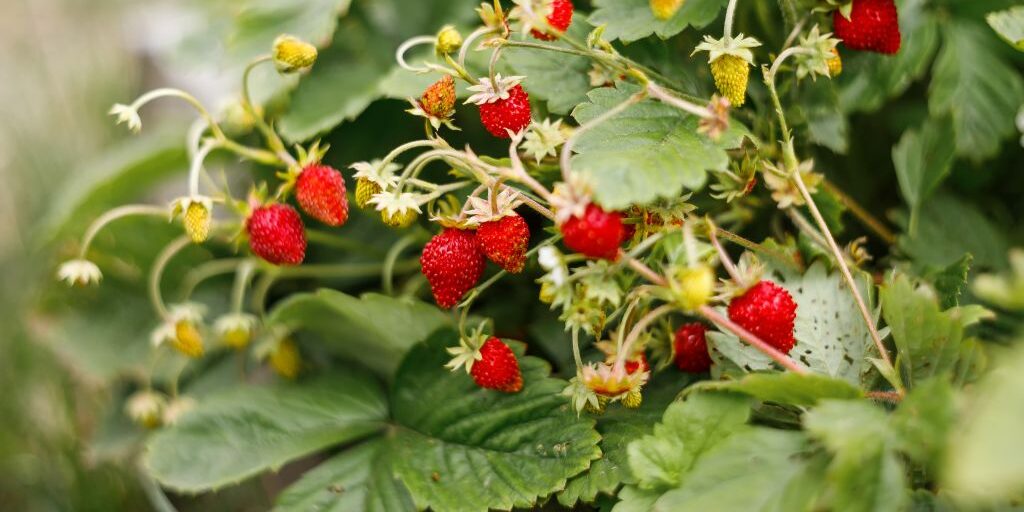


I love saw palmetto in my olives. No wait, that’s pimento, in my olives. Never mind…
Good information for me.
I’m 63 and will try this in pill form.
Always informative.
Thank you.
When you have too much of this plant around, look for the tip of the plant and cut off the top 3-5 inches. Yes, this kills it, but when you split the top, you will find an edible palm heart.
Interesting article. I didn’t see you mention saw palmetto as a remedy for prostate problems. Is this tea effective?
Please read again….
“In men, the saw palmetto is an effective herbal treatment for Benign Prostate Enlargement (BPE). It works by shrinking the prostate to its normal size, eventually treating tumors and prostate cancer. It is also superb in treating impotence and in increasing libido.
High levels of testosterone cause the enlargement of the prostate. The hormone-balancing property of the saw palmetto regulates its production to manage enlargement. Its anti-inflammatory property promotes healing for the body. It is also loaded with fatty acids that can reduce the contraction of muscles, especially in the prostate”.
Wow! Missed it entirely. Thanks.
.
Is this stuff good for the eyes? 😂
Excellent post, thank you so much! And very timely, it was just 10 days ago I took some notes from a video trying to sell a skin care supplement and made a note to pick up some saw palmetto.
Notes:
take these together to look younger (must be together): moisturize from inside out, find:
– saw palmetto
– amino acids- for joints/cartilage
– dietary maximum potency hyaluronic acid
– collagen
– vitamin a and b
– European brands are best most pure, make sure brands actually have these active ingredients
I have also heard of saw palmetto for hair. High quality article, even though I don’t plant on cultivating it any time soon, it’s nice having the knowledge. Thank you for sharing!
Can you name a brand that has these ingredients? I cannot seem to find any by researching online.
Hello
Please can somebody tell me where to order the the plant please ? Saw palm tree. : the tea, tincture . Thank you so much
Saw palmetto seed
https://amzn.to/3H64RZ8
starwest botanicals
Thank you so much! I always enjoy reading your articles. I plan to try the tea. I’ve been losing a lot of hair.